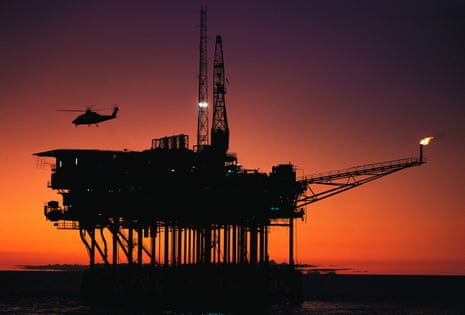The Albanese government has launched its first offshore petroleum exploration permits, opening up nearly 47,000 sq km of Australian waters to oil and gas exploration.
Ten areas stretching from the Ashmore and Cartier Islands in the Indian Ocean to Victoria’s Gippsland basin have been opened for exploration, in what the resources minister, Madeleine King, said would “play an important role in securing future energy supplies”.
“At the same time as we strive to reduce emissions, it must be emphasised that continued exploration for oil and gas in commonwealth waters is central to alleviating future domestic gas shortfalls,” she said.
“Australia’s energy sector also continues to support international energy security, particularly during the global turbulence caused largely by Russia’s invasion of Ukraine.”
But the move will further alarm environmental groups and climate watchers, who have already condemned plans to test for oil and gas along Victoria’s coast in a separate approval, which they say stands in contrast to Australia’s climate targets.
The Greens senator Peter Whish-Wilson said Labor was making “a mockery of its own weak climate target” by opening up more acreage for oil and gas exploration.
“We already have enough oil and gas in reserves to trigger catastrophic climate change to our planet,” he said.
“There’s no plausible excuse for Labor to put our marine ecosystems in jeopardy for the sake of a few profit-driven interests, to drill for the exact same product that is killing our oceans.”
Last year’s acreage release drew criticism for including an area 5km from one of Victoria’s most popular tourist destinations, the Twelve Apostles.
This year’s includes areas across the Bonaparte, Browse, Carnarvon, and Gippsland basins off the coasts of the Northern Territory, Western Australia, Victoria, and the Ashmore and Cartier Islands. Bidding closes in March next year.
after newsletter promotion
At the same time, the Albanese government has approved the first offshore greenhouse gas storage areas since 2014, with permits awarded to Inpex, Woodside Energy and TotalEnergies in the Bonaparte Basin, and Woodside in the Browse Basin. Another five are soon to be awarded.
Australia had higher levels of greenhouse gas pollution from coal per person than any other developed country in 2021, according to data released earlier this year.
Australia is the second most coal-dependent country for power generation in the OECD, behind Poland, according to the data compiled by UK-based thinktank Ember.
The Ember report says in 2021 emissions from coal amounted to 4.04 tonnes of CO2 for each person in Australia. Second-placed was South Korea, with 3.18 tonnes a year, followed by China (3.06), South Africa (2.68) and the US (2.23).
